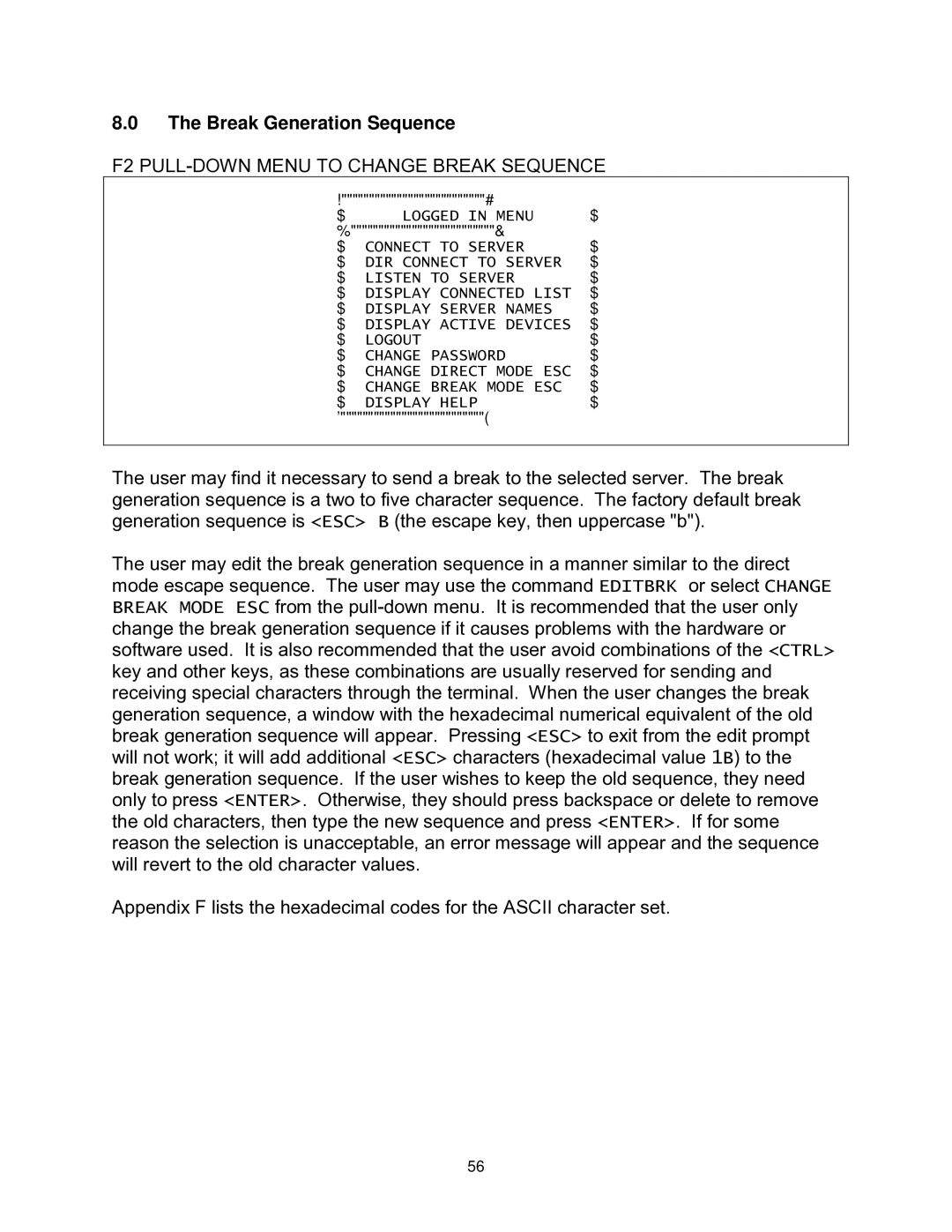
8.0The Break Generation Sequence
F2 PULL-DOWN MENU TO CHANGE BREAK SEQUENCE
┌──────────────────────────┐
│ LOGGED IN MENU │
├──────────────────────────┤
│ | CONNECT TO SERVER | │ |
│ | DIR CONNECT TO SERVER | │ |
│ | LISTEN TO SERVER | │ |
│ | DISPLAY CONNECTED LIST | │ |
│ | DISPLAY SERVER NAMES | │ |
│ | DISPLAY ACTIVE DEVICES | │ |
│ | LOGOUT | │ |
│ | CHANGE PASSWORD | │ |
│ | CHANGE DIRECT MODE ESC | │ |
│ | CHANGE BREAK MODE ESC | │ |
│ | DISPLAY HELP | │ |
└──────────────────────────┘
The user may find it necessary to send a break to the selected server. The break generation sequence is a two to five character sequence. The factory default break generation sequence is <ESC> B (the escape key, then uppercase "b").
The user may edit the break generation sequence in a manner similar to the direct mode escape sequence. The user may use the command EDITBRK or select CHANGE BREAK MODE ESC from the
Appendix F lists the hexadecimal codes for the ASCII character set.
56
